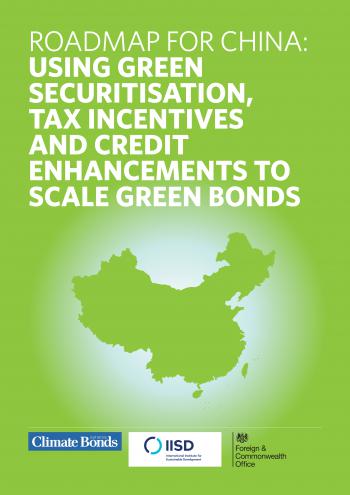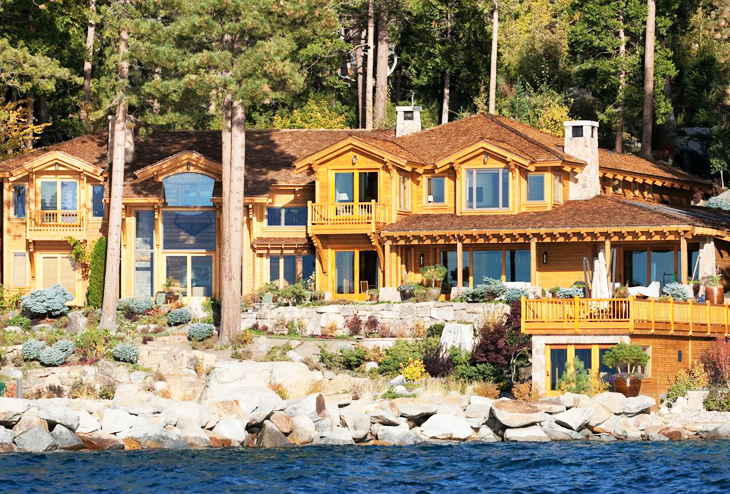Contents:


Compering the physical capital and human capital is straightforward to seek out on the balance, but the human capital is usually only assumed. In addition to goodwill, analysts can worth the impression of human capital on operations with effectivity ratios, corresponding to return on belongings and return on fairness . They are purchased and used to help your organization produce consumer items or provide companies. They are reported as belongings on a company’s balance sheet and infrequently can be depreciated over time.
- There is a strong relationship between human capital and economic growth, which is why it can help boost the economy.
- It is also used to explain how a company obtains physical assets.
- Physical capital is usually mobile, but some restrictions occurs out of trade barriers imposed by different countries.
- Throughout this session, employees will learn about foods and activities that have been proven to enhance energy levels.
Intangible assets are only recorded on a balance sheet if their values are known. Intangible assets, which cannot be touched, are typically represented by a legal document or paper. While referring how corporations have obtained their capital you will need to think about both – bodily capital and human capital. You cannot sell human capital; only the service you give as its owner may be sold on the market.
So the valuation of the equipment and machinery becomes challenging for the organisation. As the workers are one of the main factors of the production process. Full BioSuzanne is a content marketer, writer, and fact-checker. She holds a Bachelor of Science in Finance degree from Bridgewater State University and helps develop content strategies for financial brands.
Human Capital vs. Physical Capital: What’s the Difference?
Both physical and human capital, on the other hand, need a large outlay of resources in order to be acquired and developed. Both of these capitals must be carefully sought for and acquired by owners and managers if they are to provide value to the organization. • Human capital and physical capital are both types of capital resources that are essential for the smooth running of any business. Since all labor is not considered equal, employers can improve human capital by investing in the training, education, and benefits of their employees. We hope this article has helped you understand the difference between human capital and physical capital. Another key difference between human and physical capital concerns liquidity.
However, a new concept of human capital has been introduced as well. Physical capital includes machines, equipment, vehicles and buildings. Due to its illiquid nature, the valuation process of physical capital is quite challenging. Physical capital is the man-made tangible resources that support the manufacturing process of goods and services. Physical capital is considered one of the most important capitals of the production process in classical economics. Human capital is the collective intangible resources that are possessed by the human.
This contains assets like education, training, intelligence, expertise, well being, and other things employers worth corresponding to loyalty and punctuality. The time period capital has no fixed conceptual definition, and various colleges of financial thought have defined it differently. Physical capital is a subset of capital, and other subsets include monetary capital , human capital, social capital, and knowledge capital. Physical capital refers to assets which themselves have been manufactured and are used for production of other goods and services. In a broader term, physical capital refers to all non-human assets created by humans and used in the production and manufacturing process.
Physical capital is noted on the stability sheet as an asset at historical cost, not market value. Physical capital implies the non-human assets of the company, such as plant and machinery, tools and equipment, office supplies etc. that help in the process of production. Physical Capital, is used to mean, the company’s non-human assets like plant and machinery, building, computers, office supplies etc. that assist in the production of goods and services. On the contrary, human capital is defined by collection of knowledge, talent, skills and abilities possessed by an employee or a group of employees working in an organization. Human capital is an intangible asset or quality not listed on a company’s stability sheet. It could be categorized as the financial worth of a worker’s expertise and expertise.
Difference Between Essential Tremor and Parkinson’s Disease
Physical capital can be separated from its owner, but human capital is inseparable. In other words, physical capital is not bound to a person while human capital is an intrinsic part of a person and cannot be separated from the individual. Human capital is intangible, whereas physical capital is tangible. Consider the Coca-Cola Company’s corporate headquarters in Atlanta. Some may regard office buildings to be physical capital because they are man-made structures.
- The formation of physical capital mostly consists of economic and technical processes.
- Human capital’s value is commonly assumed, as opposed to physical capital, which is easily discovered on the balance sheet .
- Examples of capital goods include buildings, machines, tools, furnishings and fixtures.
- Physical Capital is any material resource or money used in production.
- Physical capital may be traded on the open market just like any other commodity.
This is a crucial consideration from the perspective of making secure investments. It’d be like renting a piece of equipment, paying to make it run more efficiently, and then sending it to a competitor who now gets to rent that improved unit at the same exact price you did. You can suggest the changes for now and it will be under the article’s discussion tab.
Related Differences and Comparisons
All of this has great economic value for employers and for the economy as a whole. While there are substantial differences between the two, both are incredibly crucial assets of any successful construction company. Any effective construction resource management plan considers both types of capital. As long as a construction company retains personnel, its investments in human capital are secure. This is because you can’t separate human capital from its owners, the workers. This is an important consideration when building a financially stable construction company.

On the opposite, human capital is outlined by collection of data, expertise, skills and talents possessed by an worker or a gaggle of staff working in an organization. Capital alludes to the company’s wealth in the form of money or assets, that can be utilized for commencing a business or investing in a running business, to generate more money. The physical capital implies the capital which is tangible in nature, such as money, plant and machinery, furniture and fixture, building etc.
That’s why there is often a shift from developing places or rural areas to more developed and urban areas. Some economists have dubbed this a brain drain or difference between physical and human capital flight. This describes the process that keeps certain areas underdeveloped while others become even more developed. Timothy Li is a consultant, accountant, and finance manager with an MBA from USC and over 15 years of corporate finance experience.
Physical capital may be traded on the open market just like any other commodity. Human capital risk refers to the gap between the human capital requirements of a company or organization and the existing human capital of its workforce. This gap can lead a company towards inefficiencies, inability to achieve its goals, a poor reputation, fraud, financial loss, and eventual closure. To reduce and eliminate human capital risk, an organization should train, foster, and support its workforce.
As a result, asset book value is frequently greater than market value. Physical capital is referred to as a tangible asset by accountants. Many types of physical capital are long-term assets with long economic lives. Physical capital is neither destroyed nor consumed during the manufacturing process, although it may decline over time. The creation of physical capital is an economic and technical process. Conversely, the formation of human capital is a social process, but it is also a result of conscious decisions taken by the entrepreneur in this regard.
Definition of Physical Capital
In economics, physical capital refers to a factor of production , such as machinery, buildings, or computers. In economic theory, physical capital is one of the three primary factors of production, also known as inputs production function. The tangible resources created by humans and used in the production of products and services are referred to as “physical capital”. In classical economics, physical capital is regarded to be one of the most essential capitals of the manufacturing process. Machines, equipment, vehicles, and structures all fall under the category of “physical capital”. Physical capital is difficult to value because of its lack of liquidity.
Morocco Seeks More Citizens’ Contribution to Reach Sustainable … – Morocco World News
Morocco Seeks More Citizens’ Contribution to Reach Sustainable ….
Posted: Thu, 04 May 2023 14:17:37 GMT [source]
A beverage manufacturing firm with a specific bottle design, for example, may suffer from the resale of a bottle-making machine because the unit can only create a single type of bottle. SkillBuild employs artificial intelligence technology to equip students and job seekers with the skills needed to qualify for growing positions in technology. This free program helps people from all walks of life build their human capital. This group includes refugees, veterans, and low-wage employees. With this initiative, IBM ensures that everyone has an equal opportunity to obtain the skills and knowledge required for a position in the IT industry.
Should CFOs Keep Their Office Space? – CFO.com
Should CFOs Keep Their Office Space?.
Posted: Fri, 05 May 2023 15:23:22 GMT [source]
Anderson is CPA, doctor of accounting, and an accounting and finance professor who has been working in the accounting and finance industries for more than 20 years. Her expertise covers a wide range of accounting, corporate finance, taxes, lending, and personal finance areas. Human capital is difficult to transmit internationally due to migration and cultural obstacles. Physical capital, on the other hand, can be easily carried globally. “Having your people at their best and entirely engaged is a business issue – it’s not just wonderful to have,” says Susan Podlogar, Vice President of Total Rewards.
The article takes a closer look at these two types of capital, the human capital and physical capital, and explains their similarities and differences. Human capital and physical capital are both types of capital resources that are essential to the smooth running of any business. Human capital refers to the skills, abilities, experience, and value that is brought onto a firm by its employees. Physical capital refers to all non-human assets created by human and used in the production process such as machinery, buildings, vehicles, etc. An important point to note is that physical and human capital must go hand in hand for a business to run its business operations successfully. The right human capital can enhance the value of physical capital, and without the right physical capital human capital cannot contribute to its full extent.
There’s no risk of a competitor somehow deriving direct financial benefits from that new equipment. Human capital is intangible and cannot be separated from the owners. It can be reduced due to aging and it is normally not shown on the financial statements. Human capital refers to a set of individual’s skills, talents, abilities, and knowledge brought into the organization.
When economists refer to capital, they are referring to the property–bodily instruments, vegetation, and gear–that enable for elevated work productivity. Capital comprises one of many four main factors of production, the others being land, labor, and entrepreneurship. Common examples of capital include hammers, tractors, assembly belts, computers, vans, and railroads. In this case the worth of the programmer’s experience is the amount the company is willing to pay over and above the market price.
Timothy has helped provide CEOs and CFOs with deep-dive analytics, providing beautiful stories behind the numbers, graphs, and financial models. Check out this post to find a concrete framework for strategic human capital investment planning. Human capital is not that easy to transport Internationally as there are migration and cultural barriers. But physical capital can be easily transported internationally.
The process of tracking and measuring physical capital’s value is quite logical. For example, a construction company can list equipment’s market value on its balance sheet and account for depreciation in a relatively predictable manner. Human capital and physical capital are both very important for any construction company. Keep reading as we take a closer look at these asset classifications and how they fit into the world ofconstruction resource management. Many types of physical capital are fixed assets that have years of economic life. The physical capitals are not destroyed or consumed during the process of manufacture, but they can be diminished over time.
It means that one can easily sell physical capital in the market.Human Capital is intangible. Human capital refers to stock of knowledge, talent, skills and abilities brought in by the employee, to the organization. Nature Tangible Intangible Formation Economic and technical process. Nature of depreciation Constant use, results in depreciation. Nature of depreciationConstant use, results in depreciation.Ageing leads to depreciation, but it can be minimized.
